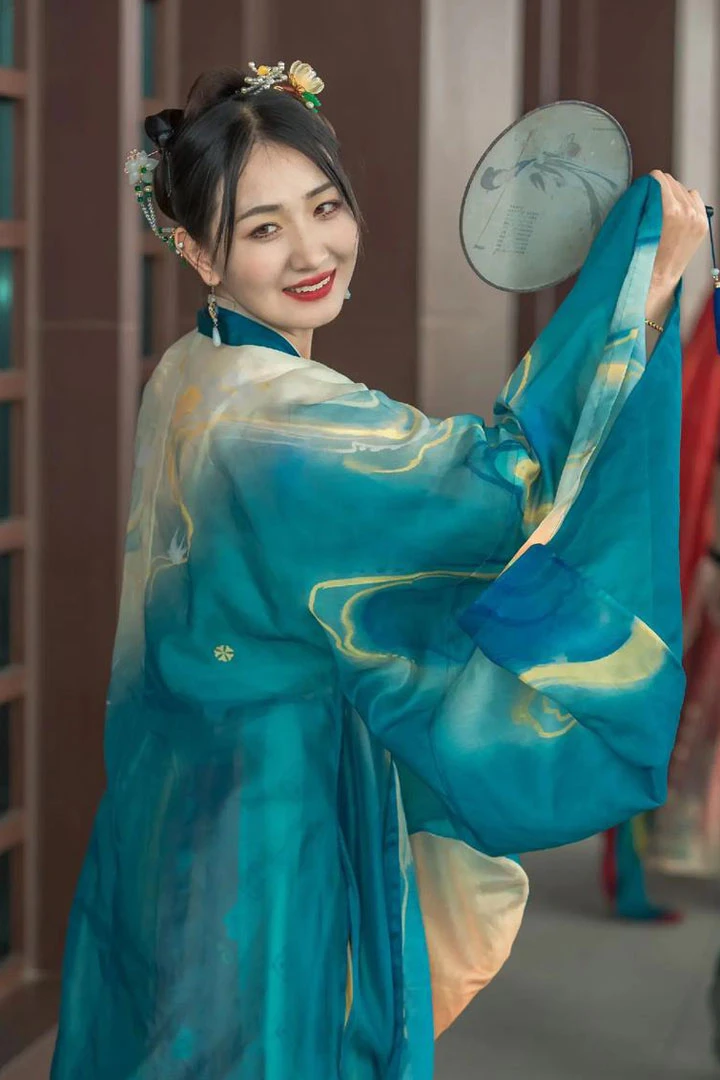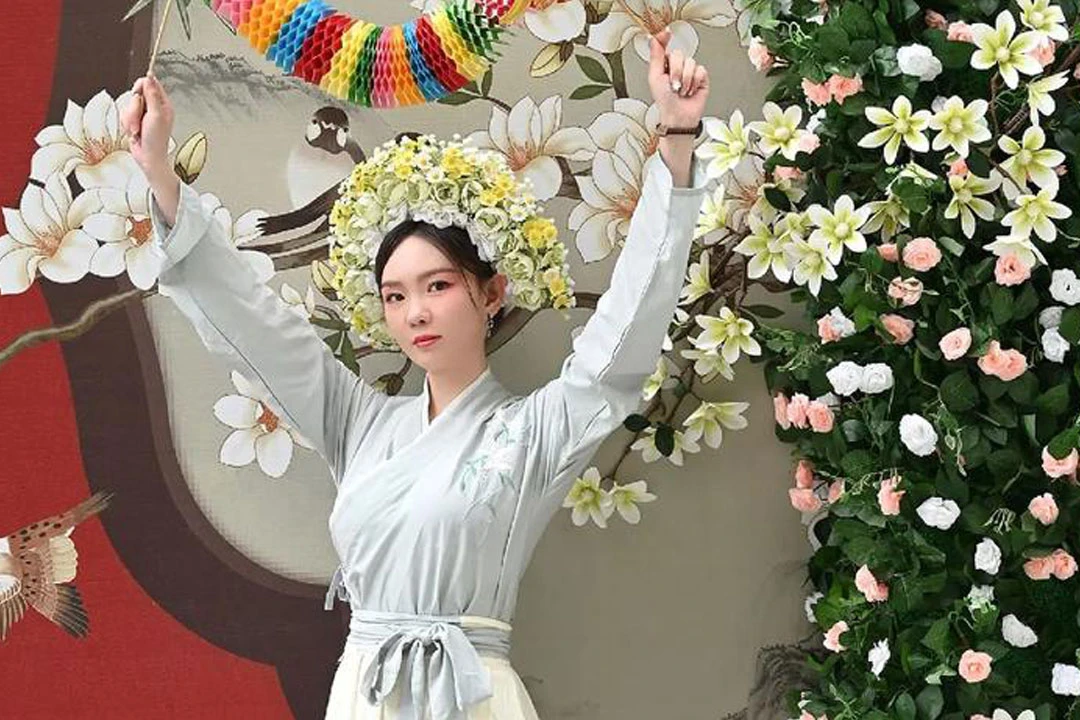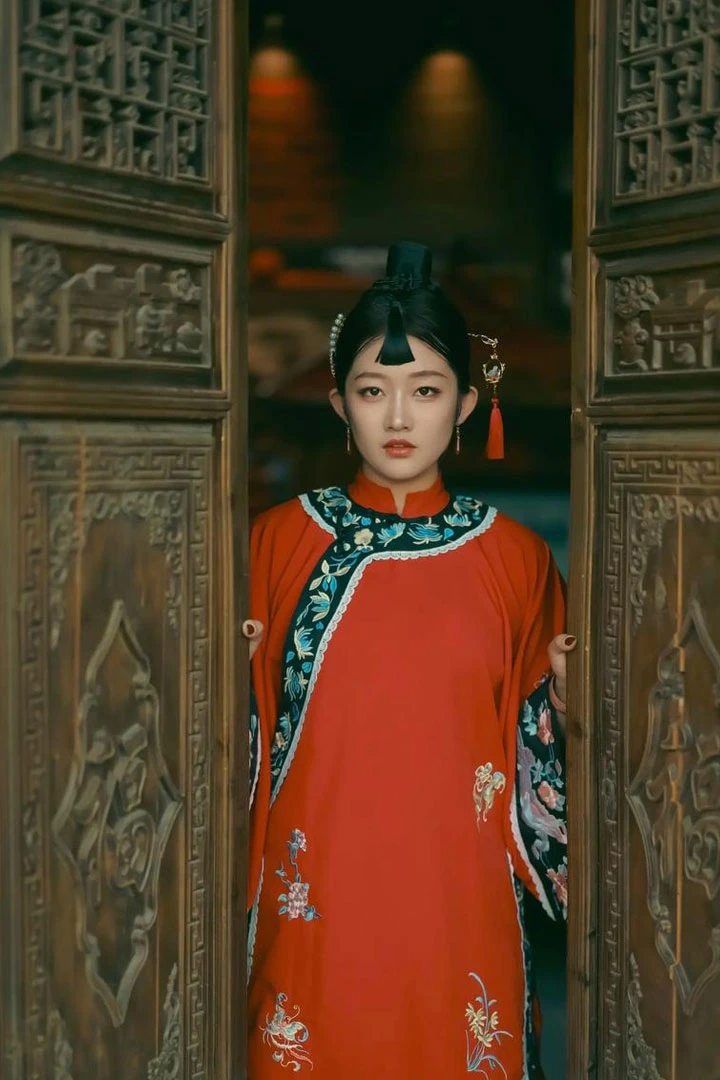This summer has witnessed a burgeoning trend where young travelers are infusing their journeys with a blend of contemporary adventure and traditional charm. Armed with cameras, these explorers are focusing not only on breathtaking landscapes and historic landmarks but are also embracing the allure of Chinese cultural elements, capturing moments in a way that celebrates both heritage and modernity.
National Flair in Every Frame
With the rise of "Guofeng" (national style) culture, traditional aesthetics are becoming the new trend. Summer has become a canvas for showcasing this style, as tourists donning Hanfu, the traditional Chinese attire, are spotted across various scenic spots. From the picturesque water towns of Jiangnan to the majestic ancient cities of the north, and even amidst natural wonders like Huangshan and Zhangjiajie, young people are creatively blending traditional and modern aesthetics. In places like Wuzhen and Xitang, travelers, like a university student named Guan Guan, capture the ethereal beauty of these ancient water towns through their Hanfu-clad selfies. Similarly, in the historical city of Xi'an, youths in elaborate Tang Dynasty costumes dance beneath ancient city walls, blending history with personal expression.
The "Guofeng" phenomenon extends beyond mere aesthetics; it represents a deeper connection to cultural heritage and personal identity. As Hanfu becomes more popular, it has also spurred a wave of related economic activities. Scenic spots now often feature Hanfu rental services and encourage traditional attire to enhance visitor experiences. This cultural revival is not only a testament to the rich heritage of China but also reflects a modern passion for blending old with new. As college student Xiao Xiao notes, wearing Hanfu has become less about standing out and more about joining a shared celebration of tradition.

However, the surge in popularity also brings challenges. Issues such as environmental degradation and the commercialization of traditional products can undermine the authentic experience of "Guofeng" culture. Experts advocate for better industry regulation, more robust environmental protections, and increased cultural awareness among travelers. By promoting responsible tourism and supporting high-quality traditional products, stakeholders can ensure that the "Guofeng" trend remains a positive and enriching part of contemporary travel culture.
The current wave of "Guofeng" travel is a vibrant fusion of youth and tradition, offering a fresh perspective on cultural engagement. As this trend continues to evolve, it holds the promise of both preserving and innovating Chinese heritage, allowing young people to create lasting memories while honoring their roots.
In an era marked by rapid modernization, the resurgence of "Guofeng" culture offers a unique juxtaposition against the backdrop of contemporary society. This fusion of historical elegance with modern self-expression creates a dynamic cultural dialogue, inviting both young and old to appreciate the depth and beauty of traditional Chinese customs.
The enthusiasm for traditional attire like Hanfu is not merely about nostalgia; it represents a deeper cultural renaissance. Young people are increasingly finding ways to integrate these traditional elements into their daily lives and travel experiences, making ancient customs relevant in the 21st century. This enthusiasm is reflected in various industries catering to this trend, from specialized Hanfu designers to boutique stores offering traditional accessories and handcrafts.
Moreover, "Guofeng" travel isn't just a trend but a movement that influences various sectors, including tourism, fashion, and even education. Tourist destinations are now offering immersive experiences that blend historical reenactments with modern conveniences. These attractions often include guided tours, workshops on traditional crafts, and interactive cultural experiences that engage visitors on multiple levels. Such offerings not only enhance the appeal of these destinations but also educate the public about the rich tapestry of Chinese history.
Cultural Engagement Through Education
In addition to industry efforts, there is a growing recognition of the role education plays in fostering an appreciation for traditional culture. Some educational institutions are incorporating traditional arts and history into their curricula, providing students with opportunities to learn about and engage with their cultural heritage. These programs aim to cultivate a sense of pride and understanding among younger generations, ensuring that traditional practices are not only preserved but also celebrated.
For instance, schools and cultural centers are organizing workshops and festivals that highlight traditional Chinese arts, from calligraphy and painting to music and dance. By engaging with these practices, students and participants develop a deeper connection to their cultural roots, which can inspire them to incorporate these traditions into their own lives and creative endeavors.
As the "Guofeng" trend continues to evolve, it is crucial for all involved parties to maintain a balanced approach. This means promoting the cultural and aesthetic values of traditional practices while addressing challenges such as environmental sustainability and authenticity. By fostering a respectful and informed engagement with traditional culture, we can ensure that this vibrant aspect of our heritage continues to enrich our lives and inspire future generations.
The rise of "Guofeng" travel is a celebration of the enduring appeal of traditional culture. It offers a meaningful way for young people to connect with their heritage and express their individuality. As this trend flourishes, it not only revives historical elegance but also creates a space where the past and present harmoniously coexist, allowing for a richer and more diverse cultural experience.


